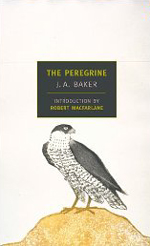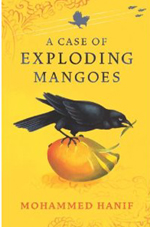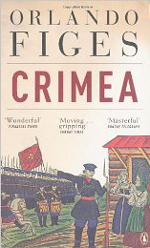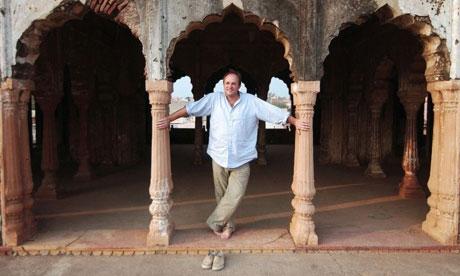William Dalrymple wrote his highly acclaimed bestseller In Xanadu, an account of his journey to the ruins of Kubla Khan's stately pleasure dome, when he was 22. In 1989 he moved to Delhi where he lived for six years researching and writing his second book, City of Djinns (1993), which won the 1994 Thomas Cook Travel Book of the Year Award. Since then he has published five further books, all of which have won major prizes. White Mughals (2003), which won the Wolfson Prize for History, is to be made into a film directed by and starring Ralph Fiennes.
Dalrymple also has an illustrious broadcasting career: he wrote and presented the television series Stones of the Raj and Indian Journeys for Channel 4, which won the Grierson Award for Best Documentary Series at BAFTA in 2002 and his Radio 4 series on the history of British spirituality and mysticism, The Long Search, won the 2002 Sandford St Martin Prize for Religious Broadcasting. He is also co-founder of the Jaipur Literature Festival, Asia’s most prestigious literary festival.
What are you reading at the moment?
I have just finished an extraordinary and much underrated early Cormac McCarthy, Child of God, about a violent, loner, psycho-rapist backwoodsman, who McCarthy somehow makes you feel real sympathy for. Beautifully written, as ever with McCarthy, and with some of his best ribbon-dialogue, foreshadowing his later work in classics like Blood Meridian and No Country for Old Men. No where else do you feel more strongly that McCarthy is the real heir of Hemingway. It also made surprisingly gripping poolside reading.
I am now reading another very beautiful book about wild rural spaces, but it couldn’t be more different. The Peregrine, by JA Baker, is now recognised as one of the most remarkable pieces of nature writing ever to come out of the British Isles, as well as one of the great classics of 20th-century prose writing. Yet oddly, little is known about the writer, even the date of his death, other than that he worked briefly as a librarian in Essex, and wrote two books on its wildlife. It makes the pitch-perfect observation and spectacular descriptive passages all the more remarkable: "Like the seafarer,” he writes, “the peregrine lives in a pouring-away world of no attachment, a world of wakes and tilting, of sinking planes of land and water... I shut my eyes and tried to crystallise my will into the light-drenched prism of the hawk's mind." The writing continues at this pitch of brilliance for 150 pages of startling images and brilliant visualisation like some book-length prose sequel to Gerald Manley Hopkin’s Windhover. Never in our time has the English landscape and its nature been more beautifully distilled and celebrated.
[Excerpt from The Peregrine by JA Baker (New York Review Books Classics)]
 At my home, the long ridge lies across the skyline like the low hull of a submarine. Above it, the eastern sky is bright with reflections of distant water, and there is a feeling of sails beyond land. Hill trees mass together in a dark-spired forest, but when I move towards them they slowly fan apart, the sky descends between and they are solitary oaks and elms, each with its own wide territory of winter shadow. The calmness, the solitude of horizons lures me towards them, through them, and on to others. They layer the memory like strata.
At my home, the long ridge lies across the skyline like the low hull of a submarine. Above it, the eastern sky is bright with reflections of distant water, and there is a feeling of sails beyond land. Hill trees mass together in a dark-spired forest, but when I move towards them they slowly fan apart, the sky descends between and they are solitary oaks and elms, each with its own wide territory of winter shadow. The calmness, the solitude of horizons lures me towards them, through them, and on to others. They layer the memory like strata.
From the town, the river flows north-east, bends east round the north side of the ridge, turns south to the estuary. The upper valley is a flat open plain, lower down it is narrow and steep-sided, near the estuary it is again flat and open. The plain is like an estuary of land, scattered with island farms. The river flows slowly, meanders; it is too small for the long, wide estuary, which was once the mouth of a much larger river that drained most of middle England.
Detailed descriptions of landscape are tedious. One part of England is superficially so much like another. The differences are subtle, coloured by love. The soil here is clay: boulder clay to the north of the river, London clay to the south. There is gravel on the river terraces, and on the higher ground of the ridge. Once forest, then pasture, the land is now mainly arable. Woods are small, with few large trees; chiefly oak standards with hornbeam or hazel coppice. Those that still stand are of hawthorn, blackthorn and elm. Elms grow tall in the clay; their varying shapes contour the winter sky. Cricket-bat willows mark the river’s course, alders line the brook. Hawthorn grows well. It is a country of elm and oak and thorn. People native to the clay are surly and slow to burn, morose and smouldering as alder wood, laconic, heavy as the land itself.
There are four miles of tidal coast, if all the creeks and islands are included; it is the longest and most irregular county coastline. It is the driest county, yet watery-edged, flaking down to marsh and salting and mud-flat. The drying sandy mud of the ebb-tide makes the sky clear above; clouds reflect water and shine it back inland.
What are you intending to read this summer and why?
I have lots of reading planned in order to catch up on the authors coming this January to the Jaipur Literature Festival which I help direct - among them new books by Nicole Krauss, Richard Dawkins and Michael Ondaatje. I’m especially looking forward to new novels by two of my favourite authors: Our Lady of Alice Bhatti by Mohammad Hanif and Hari Kunzru’s Gods Without Men. Also three highly rated non-fiction debuts about the new India, namely Aman Sethi’s A Free Man, Akash Kapur’s India Becoming and Siddartha Deb’s The Beautiful and the Damned. Something very odd is happening at the moment: Indians have suddenly discovered the full possibilities of non-fiction as a way of exploring their extraordinary country, while it’s the Pakistanis who are now making the waves in fiction.
[Excerpt from A Case of Exploding Mangoes by Mohammed Hanif (Jonathan Cape)]
 You might have seen me on TV after the crash. The clip is short and everything in it is sun-bleached and slightly faded. It was pulled after the first two bulletins because it seemed to be having an adverse affect on the morale of the country’s armed forces. You can’t see it in the clip, but we are walking towards Pak One, which is parked behind the cameraman’s back, in the middle of the runway. The aeroplane is still connected to the auxiliary fuel pump and surrounded by a group of alert commandos in camouflaged uniforms. With its dull grey fuselage barely off the ground, the plane looks like a beached whale contemplating how to drag itself back to the sea, its snout drooping with the enormity of the task ahead.
You might have seen me on TV after the crash. The clip is short and everything in it is sun-bleached and slightly faded. It was pulled after the first two bulletins because it seemed to be having an adverse affect on the morale of the country’s armed forces. You can’t see it in the clip, but we are walking towards Pak One, which is parked behind the cameraman’s back, in the middle of the runway. The aeroplane is still connected to the auxiliary fuel pump and surrounded by a group of alert commandos in camouflaged uniforms. With its dull grey fuselage barely off the ground, the plane looks like a beached whale contemplating how to drag itself back to the sea, its snout drooping with the enormity of the task ahead.
The runway is in the middle of the Bahawalpur desert, 600 miles from the Arabian Sea. There is nothing between the sun’s white fury and the endless expanse of shimmering sand except a dozen men in khaki uniforms walking towards the plane.
For a brief moment you can see General Zia’s face in the clip, the last recorded memory of a much-photographed man. The middle parting in his hair glints under the sun, his unnaturally white teeth flash, his moustache does its customary little dance for the camera but, as the camera pulls out, you can tell that he is not smiling. If you watch closely, you can probably tell that he is in some discomfort. He is walking the walk of a constipated man.
The man walking on his right is the US ambassador to Pakistan, Arnold Raphel, whose shiny bald head and carefully groomed moustache give him the air of a respectable homosexual businessman from small-town America. He can be seen flicking an invisible speck of sand from the lapel of his navy-blue blazer. His smart-casual look hides a superior diplomatic mind; he is a composer of sharp, incisive memos and has the ability to remain polite during the most hostile exchanges. On General Zia’s left, his former spymaster and the head of Inter-Services Intelligence, General Akhtar, seems weighed down by half a dozen medals on his chest and drags his feet as if he is the only man in the group who knows they shouldn’t be boarding this plane. His lips are pinched and, even when the sun has boiled everything into submission and drained all colour out of the surroundings, you can see his normally pale skin has turned a wet yellow. His obituary in the next day’s newspapers will describe him as “the Silent Soldier” and “one of the ten men standing between the Free World and The Red Army”.
What are you planning to read next?
I’m currently writing a book about the First Afghan War, The Return of the King, out next May, so am also greatly looking forward to reading Orlando Figes’ Crimea: The Last Crusade, which examines the next episode in the Great Game between Russia and Britain in the Middle East and Central Asia. The English literature on the Great Game is almost exclusively derived from British sources. Figes gives a whole new perspective on the war through his use of Russian sources just as I've found 11 full-length accounts of the 1839 Afghan War, none of which have ever before been translated or used in English-language accounts of the conflict.
[Excerpt from Crimea: The Last Crusade by Orlando Figes (Penguin)]
 For weeks the pilgrims had been coming to Jerusalem for the Easter festival. They came from every corner of Eastern Europe and the Middle East, from Egypt, Syria, Armenia, Anatolia, the Greek peninsula, but most of all from Russia, travelling by sea to the port of Jaffa where they hired camels or donkeys. By Good Friday, on 10 April 1846, there were 20,000 pilgrims in Jerusalem. They rented any dwelling they could find or slept in family groups beneath the stars. To pay for their long journey, nearly all of them had brought some merchandise, a handmade crucifix or ornament, strings of beads or pieces of embroidery, which they sold to the European tourists at holy shrines. The square before the Church of the Holy Sepulchre, the focus of their pilgrimage, was a busy marketplace, with colourful displays of fruit and vegetables competing for space with pilgrims’ wares and the smelly hides of goats and oxen left out in the sun by the tanneries behind the church. Beggars too, collected here. They frightened strangers into giving alms by threatening to touch them with their leprous hands. Wealthy tourists had to be protected by their Turkish guides, who hit the beggars with heavy sticks to clear a path to the church doors.
For weeks the pilgrims had been coming to Jerusalem for the Easter festival. They came from every corner of Eastern Europe and the Middle East, from Egypt, Syria, Armenia, Anatolia, the Greek peninsula, but most of all from Russia, travelling by sea to the port of Jaffa where they hired camels or donkeys. By Good Friday, on 10 April 1846, there were 20,000 pilgrims in Jerusalem. They rented any dwelling they could find or slept in family groups beneath the stars. To pay for their long journey, nearly all of them had brought some merchandise, a handmade crucifix or ornament, strings of beads or pieces of embroidery, which they sold to the European tourists at holy shrines. The square before the Church of the Holy Sepulchre, the focus of their pilgrimage, was a busy marketplace, with colourful displays of fruit and vegetables competing for space with pilgrims’ wares and the smelly hides of goats and oxen left out in the sun by the tanneries behind the church. Beggars too, collected here. They frightened strangers into giving alms by threatening to touch them with their leprous hands. Wealthy tourists had to be protected by their Turkish guides, who hit the beggars with heavy sticks to clear a path to the church doors.
In 1846 Easter fell on the same date in the Latin and Greek Orthodox calendars, so the holy shrines were much more crowded than usual, and the mood was very tense. The two religious communities had long been arguing about who should have first right to carry out their Good Friday rituals on the altar of the Calvary inside the Church of the Holy Sepulchre, the spot where the cross of Jesus was supposed to have been inserted in the rock. During recent years the rivalry between the Latins and the Greeks had reached such fever pitch that Mehmet Pasha, the Ottoman governor of Jerusalem, had been forced to position soldiers inside and outside the church to preserve order. But even this had not prevented fights from breaking out.
On this Good Friday the Latin priests arrived with their white linen altar-cloth to find that the Greeks had got there first with their silk embroidered cloth. The Catholics demanded to see the Greeks’ firman, their decree from the Sultan in Constantinople, empowering them to place their silk cloth on the altar first. The Greeks demanded to see the Latins’ firman allowing them to remove it. A fight broke out between the priests, who were quickly joined by the monks and pilgrims on either side. Soon the whole church was a battlefield.



Add comment